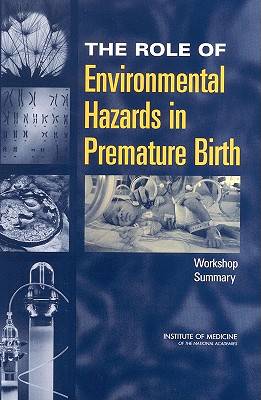
- Retrait gratuit dans votre magasin Club
- 7.000.000 titres dans notre catalogue
- Payer en toute sécurité
- Toujours un magasin près de chez vous
- Retrait gratuit dans votre magasin Club
- 7.000.0000 titres dans notre catalogue
- Payer en toute sécurité
- Toujours un magasin près de chez vous
The Role of Environmental Hazards in Premature Birth
Workshop Summary
Institute of Medicine, Board on Health Sciences Policy, Roundtable on Environmental Health Sciences Research and Medicin
Livre broché | Anglais
55,95 €
+ 111 points
Description
Each year in the United States approximately 440,000 babies are born premature. These infants are at greater risk of death, and are more likely to suffer lifelong medical complications than full-term infants. Clinicians and researchers have made vast improvements in treating preterm birth; however, little success has been attained in understanding and preventing preterm birth. Understanding the complexity of interactions underlying preterm birth will be needed if further gains in outcomes are expected.
The Institute of Medicine's Roundtable on Environmental Health Sciences, Research, and Medicine sponsored a workshop to understand the biological mechanism of normal labor and delivery, and how environmental influences, as broadly defined, can interact with the processes of normal pregnancy to result in preterm birth. This report is a summary of the main themes presented by the speakers and participants.
Spécifications
Parties prenantes
- Auteur(s) :
- Editeur:
Contenu
- Nombre de pages :
- 146
- Langue:
- Anglais
Caractéristiques
- EAN:
- 9780309090650
- Date de parution :
- 17-12-03
- Format:
- Livre broché
- Format numérique:
- Trade paperback (VS)
- Dimensions :
- 162 mm x 231 mm
- Poids :
- 249 g

Les avis
Nous publions uniquement les avis qui respectent les conditions requises. Consultez nos conditions pour les avis.






